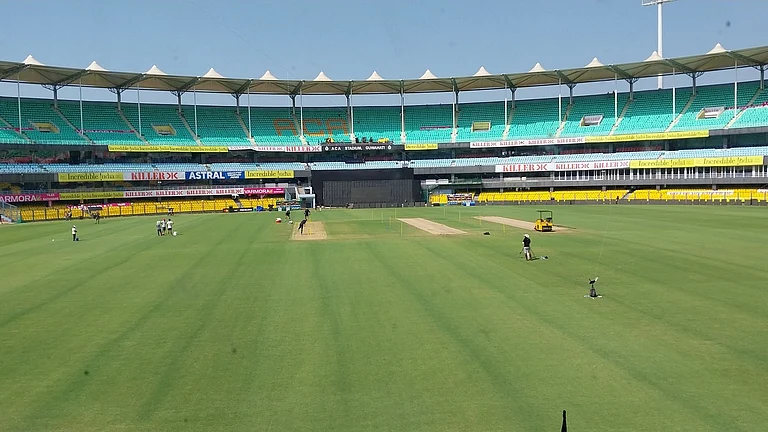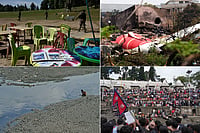Worrying Signals
- Increasing fund inflows could fuel inflation. Higher prices here to stay.
- Private consumption remains weak; consumer demand has not picked up across sectors
- India does not have the fiscal freedom to launch large social sector schemes in this phase
- External environment is volatile again. This could lead to weakening of the currency, excessive inflows.
***
Some economists compare the recovery phase of the global financial crisis—the stage India is in right now—to learning how to ride a bicycle. It was easy enough to clamber on and join other countries in throwing antidotes at the crisis. But it’s very, very hard to stop and dismount. The palliatives India administered ranged from multi-billion-rupee tax-breaks to farm-loan waivers. But now, as the government celebrates its partial insulation from global woes, and prepares to slowly wean certain sectors off sops in favour of fiscal prudence, no one is quite sure what part of the revival package worked and what didn’t.
Frankly, this indecisiveness extends to predicting the Indian economy’s future. On the face of it, corporate earnings are up and jobs are back in the services industry. The stock markets may be nervous, but at levels way above those even a year ago. But amidst all those reassuring predictions of high growth—pegged at 8.5 per cent for this year—there’s a creeping feeling that risky times are back again.
As if on cue, the global situation is back to being volatile. The Euro crisis has only brought new risks to the foreground. There is talk of another downturn in the US, or at least a downslide before another recovery is staged, and potential failure in key markets like Spain. It doesn’t matter now whether you’re part of the “Washington consensus” or against it—caution is the global economy’s buzzword. This concern is mirrored in frenetic stock market fluctuations in Indian exchanges.
Perhaps that’s got to do with continuing uncertainty: in many cases, we’re still seeing the full impact of the slowdown. For the first time in seven years, exports dipped nearly 5 per cent in 2009-10 despite the much-touted recovery since November 2009. (The rupee, in real terms, has appreciated over 20 per cent over the year to April 2010.) Manufacturing clocked double-digit growth in 2009-10 against odds, but it hasn’t gone unnoticed that month-on-month growth has been slowing since January 2010.
So, if corporate results are on the upswing, is the crisis over? “Not quite yet,” says India’s chief statistician Pronab Sen, emphasising that private consumption still remains weak. “If you see the sales of some items, such as automobiles, you may feel that the crisis is over, with sales zooming and what not. But if you look at the IIP (Index of Industrial Production) closely, the consumer non-durables are very, very weak.”
At the same time, in the last two months, capital inflows have emerged as a key risk, leaving policymakers with many potential worries to deal with. Industry will have to deal with the impact of counter-measures taken by policymakers. “Much that is happening (the perception of risks increasing) is driven by external events,” says economist D.K. Srivastava of the Madras School of Economics. “We expect money supply growth; the monetary base is increasing as capital flows in. The risk is there, but it’s nothing the RBI cannot handle. The bank has been rather cautious in increasing interest rates,” he says.
In late April as well as through the month of May, economists cautioned that an inflow of money—in excess of the capacity to find investment-worthy projects—was a distinct possibility. In such an eventuality, inflation could be fuelled further, making the situation more volatile. “The only major risk (for India) right now is food prices,” says Prof Himanshu, of Jawaharlal Nehru University. “A lot depends on the success of agricultural output, if the monsoon holds. There’s a volatile kind of general environment, but it can be neutralised by suitable policy initiatives,” he says.
But how agriculture shapes up over the next six months is not the only big unknown. Private investment, a key driver of economic growth from 2003-08, is yet to perk up seriously. “So far there is no sign of this picking up, but people who are optimistic feel that in the near future we won’t be in a crisis-like situation,” says Himanshu.
Meanwhile, the process of withdrawing the stimulus, by way of reducing tax breaks to exporters and industry in 2008, has begun. The centre is juggling with the deficit on one hand, and the withdrawal is expected to add buoyancy to tax collections. “The risks right now have more to do with international demand and how that shapes up,” says Sen. “The (stimulus) withdrawal process has already begun, but I’m not sure what pace should it take. Shouldn’t we keep an eye open on the conservative side, and avoid too early a withdrawal?” he asks.
Of course, industry argues that the revival “packages” that jump-started them through the financial troubles of 2009 should be unplugged with caution. That’s because they feel the stimulus did not yield expected results—ruthless cost-cutting did. Take Korean multinational LG in India. In 2010, despite increasing prices, the company has not approximated its margins of 2009. “Things remain unpredictable simply because the tax structure is altered all the time,” says its marketing head, Amitabh Tiwari.
While policymakers, even Prime Minister Manmohan Singh, have sought to fight down rising prices, it turns out that post-recovery, people will simply have to learn to live with high prices. (Inflation is now expected to dip to a manageable 5 or 6 per cent only by this year’s end.) And N.R. Bhanumurthy of nipfp explains that while a normal monsoon is expected to cool prices, during the crisis period the price index moved permanently to the higher side. “Some costs are not going to go down. Measures to keep up private investment will be needed while learning to live with higher prices,” he says.
Clearly, a delicate balance is near to being achieved within the economy, one that can be shaken up by a number of factors—another world economy tanking, currency fluctuations, or continuing insipid demand. The overall mood is one of nervousness. However rosy the global view on India’s “prospects”, this is not exactly the time to shower high growth forecasts like confetti.


























